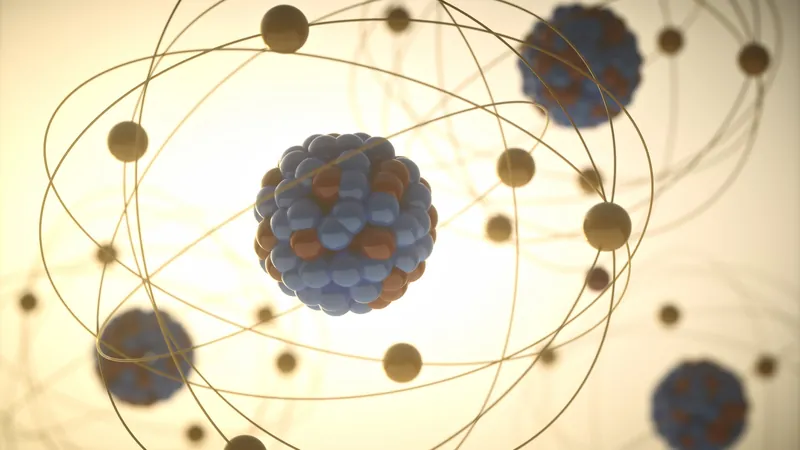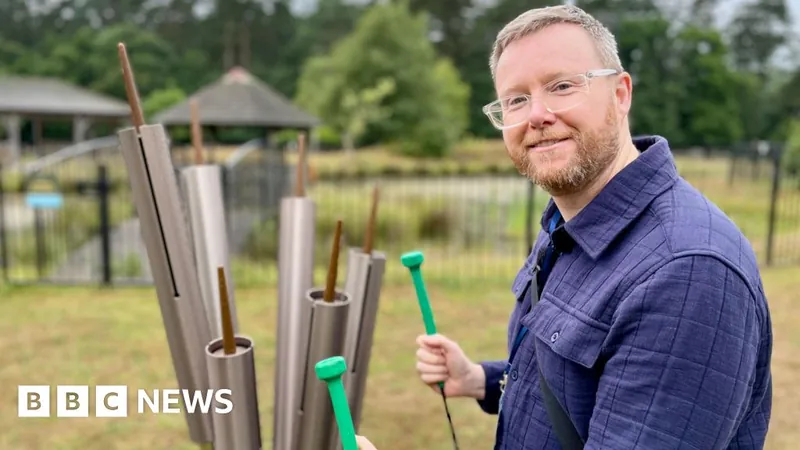
Breakthrough in Neutron Mystery: Do Invisible Atoms Hold the Key?
2025-05-31
Author: Wei Ling
The Enigmatic Neutron Lifetime Puzzle
A stunning discovery in particle physics might finally crack the infamous 'neutron lifetime puzzle.' Researchers propose the existence of a mysterious second type of hydrogen atom that interacts invisibly with light, potentially accounting for much of the universe's missing matter.
What Is the Neutron Lifetime Puzzle?
The neutron lifetime puzzle stems from conflicting experimental results regarding how long free neutrons exist before decaying. Two methods—beam and bottle—yielded differing lifetimes: beam experiments report about 888 seconds, while bottle experiments find just 878 seconds. Such a discrepancy, exceeding experimental error margins, has puzzled scientists for years.
The Proposal: Invisible Atoms in Play
Eugene Oks, a physicist from Auburn University, suggests that nefarious invisible hydrogen atoms could hold the key. He theorizes that neutrons occasionally decay into just two particles: a hydrogen atom and a neutrino. The catch? This hydrogen is electrically neutral and does not engage with light, making it practically invisible to traditional detection methods.
Unique Qualities of Invisible Hydrogen
Unlike typical hydrogen atoms, this second flavor has an electron that is much more likely to be located close to the proton, rendering it immune to the electromagnetic forces that allow normal atoms to be detected. Oks claims these are solutions to the Dirac equation—usually deemed unphysical—taking into account that protons are finite in size.
The Ripple Effect: Explaining Cosmic Mysteries
Oks believes if these invisible atoms exist in abundance, they could also qualify as a significant form of dark matter, the unseen substance believed to make up much of the universe. Past studies indicated that these atoms might account for anomalies observed in ancient hydrogen signals.
Next Steps: Testing the Hypothesis
In collaboration with experimental teams at the Los Alamos National Laboratory and Germany's Forschungszentrum Jülich, Oks is set to validate his theory. These experiments aim to selectively excite and isolate the invisible hydrogen using electron beams and lasers.
Could This Change Everything?
If proven true, this theory could revolutionize our understanding of the neutron lifetime, enhancing our knowledge of cosmic formation. "The neutron lifetime is crucial for mapping the primordial elements created in the infant universe," Oks explains. This isn’t just a step forward; it could rewrite the history of the cosmos!



 Brasil (PT)
Brasil (PT)
 Canada (EN)
Canada (EN)
 Chile (ES)
Chile (ES)
 Česko (CS)
Česko (CS)
 대한민국 (KO)
대한민국 (KO)
 España (ES)
España (ES)
 France (FR)
France (FR)
 Hong Kong (EN)
Hong Kong (EN)
 Italia (IT)
Italia (IT)
 日本 (JA)
日本 (JA)
 Magyarország (HU)
Magyarország (HU)
 Norge (NO)
Norge (NO)
 Polska (PL)
Polska (PL)
 Schweiz (DE)
Schweiz (DE)
 Singapore (EN)
Singapore (EN)
 Sverige (SV)
Sverige (SV)
 Suomi (FI)
Suomi (FI)
 Türkiye (TR)
Türkiye (TR)
 الإمارات العربية المتحدة (AR)
الإمارات العربية المتحدة (AR)